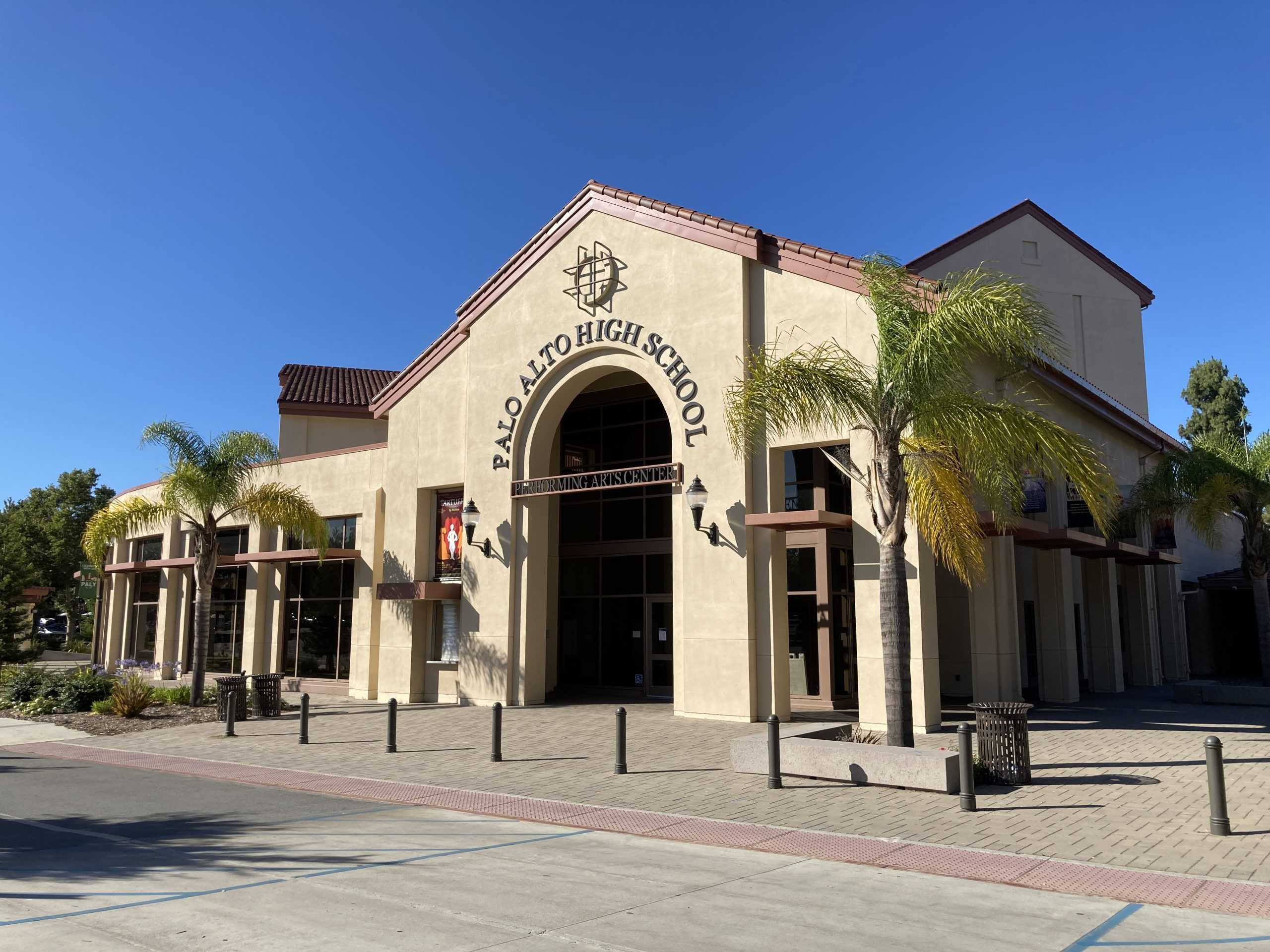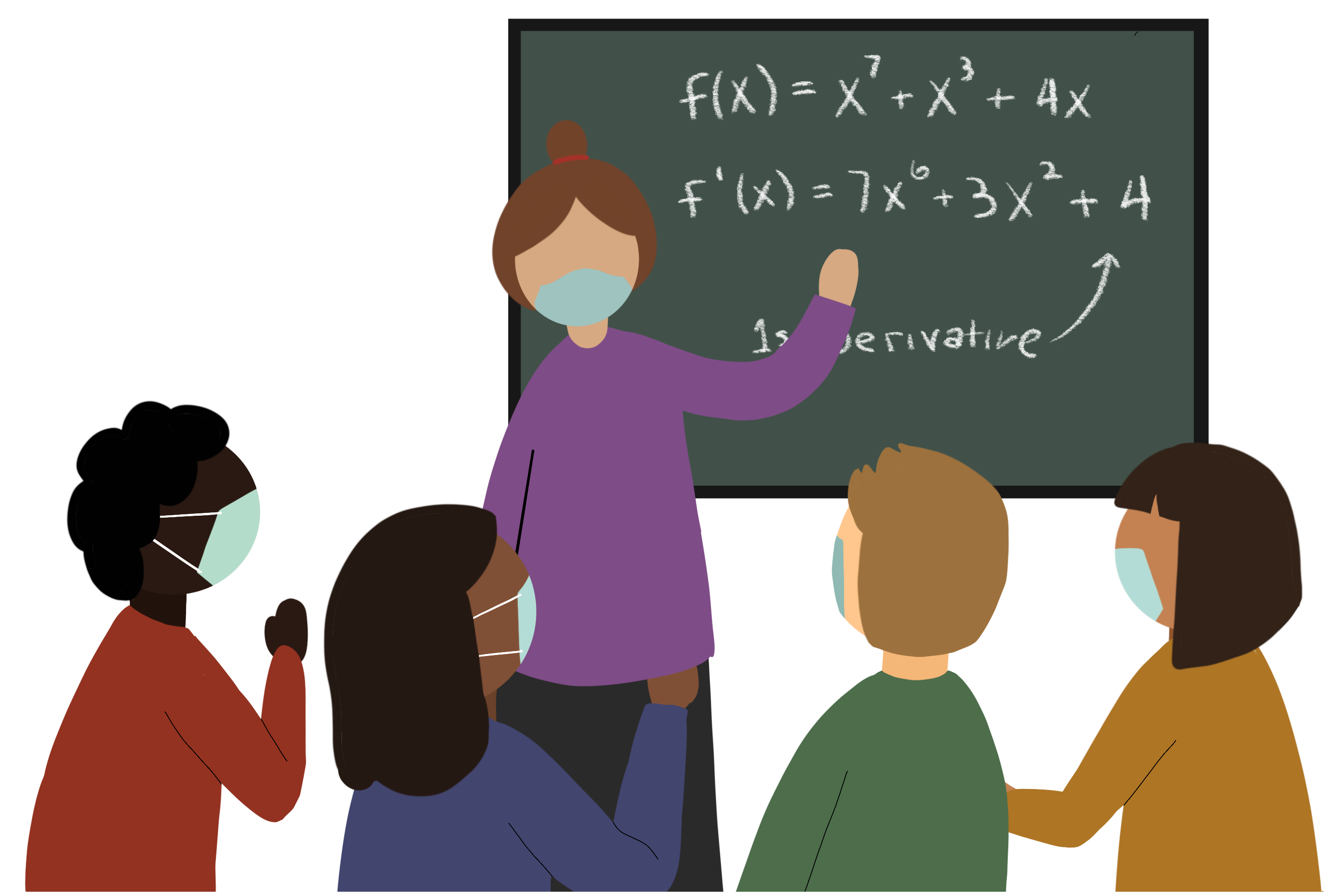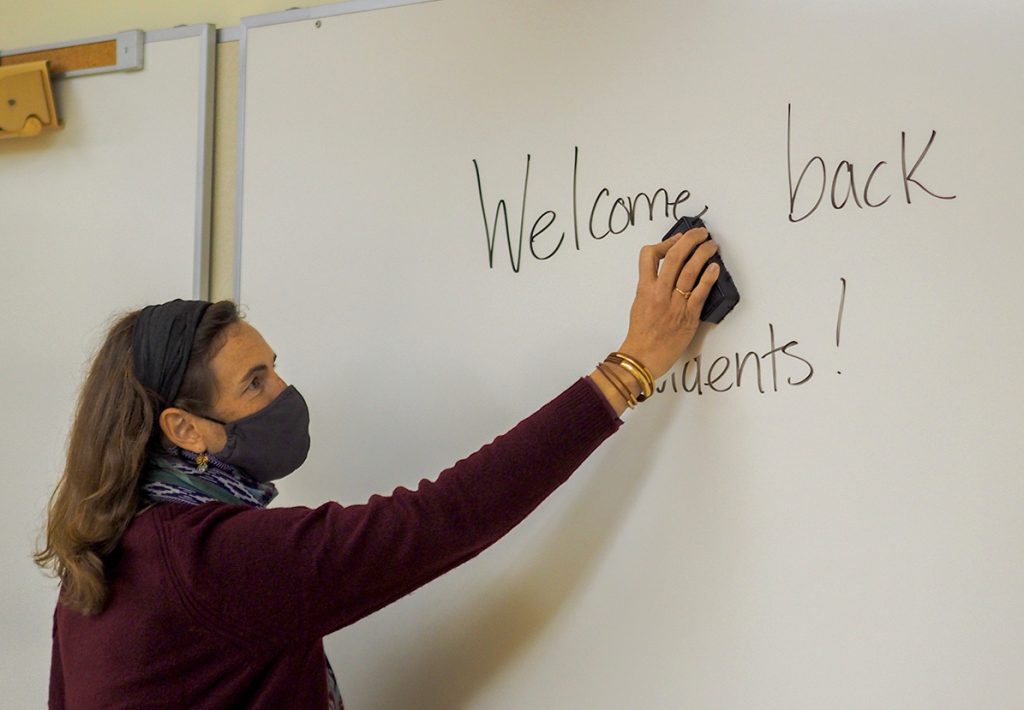“It just makes me sick to my stomach,” Superintendent Don Austin says from his 3-inch-wide rectangle on Zoom.
He knows students have lost a lot.
No Prom.
No Spirit Week.
And not a single foot on the senior deck.
While students have tried to stay positive, hope for an end to our virtual confinement has slowly slipped away. Austin says he gets it, and he seems to have lost patience, too.
He is speaking to the Verde staff three weeks after the school board unanimously voted to pass a reopening plan that faced significant pushback from both teachers and students alike. Less than a week after the vote, Santa Clara County moved into the COVID-19 purple tier and the plan came crashing down, with students and staff left stranded looking out at yet another distanced semester.
Regardless of the now-defunct reopening plan, the process leading up to the board decision raised issues of transparency and emphasized the divide between the board and its constituents. When the time to reopen eventually arrives, can students and teachers rely on the board to get it right? We spoke to the superintendent, board members, students and teachers to figure out what went wrong and what comes next.

Moving forward virtually
With COVID-19 cases continually growing, Austin maintained that students will not be returning to campus second semester. Instead, district officials are focusing on other developing programs.
“We’re kicking around ideas to change what summer school could look like,” Austin said. “As long as we’re allowed for in-person, we’d like to open it up to some fun things. Also, we would like there to be core classes [offered] for [reducing] classroom size for the next year.”
“If things start to get better I would like us to really push more on extracurricular activities and I would love to see teachers promote social-distanced educational stimulation.”
— Jennifer DiBrienza, board member
Even though an official return is improbable this school year, board member Jennifer DiBrienza hopes that once the county transitions into the red tier, there will be more on-campus opportunities.
“If things start to get better I would like us to really push more on extracurricular activities and I would love to see teachers promote social-distanced educational stimulation,” DiBrienza said.
The school board is collecting feedback from staff and students to make distance learning more suitable for all, according to Austin. Additionally, changes to Monday’s bell schedule may be considered.
“I don’t expect a district solution for the Monday schedule,” Austin said. “I’ve asked each of our secondary principals to work with their staff and students and to come back with recommendations for the Monday schedule.”
Furthermore, Austin explained that the board will continue to improve an eventual hybrid plan by making it more interactive.
“We have about 400 students between the two high schools that requested hybrid,” Austin said. “When we go back, I don’t want class to be silent [and] staring at a Zoom screen.
Frustrations with returning
Even after the reopening plan’s cancellation, families continue to have reservations about transparency between the district and its constituents.
Palo Alto High School Junior ASB President Mathew Signorello-Katz’s concerns lie with how the plan was developed without significant constituent input.
“We saw community member after community member expressing their genuine concern regarding the plan, yet the board failed to listen and approved the plan unanimously,” Signorello-Katz said. “The PAUSD board should spend a significant amount of time reflecting on whether or not they are truly representing their constituents.”
The Paly and Henry M. Gunn High School student board representatives — both of whom have a preferential vote — voted against the reopening plan.
“We saw community member after community member expressing their genuine concern regarding the plan, yet the board failed to listen and approved the plan unanimously.”
— Mathew Signorello-Katz, Junior ASB President
After feeling unheard by the board, Paly students Kabir Bhatia, Jeffery Tu, Madison Abbassi, Matthew Cao, Erin Kim, Colleen Wang and Ajay Venkatraman voiced their disapproval through an open letter, which garnered over 690 signatures from PAUSD staff, students and parents. The letter addresses common concerns between students and faculty and explores other methods for helping students learn remotely, including the expansion of PAUSD+ and future onsite opportunities.
Furthermore, the Palo Alto Educators Association addressed the district, asking for a more developed and transparent reopening process, with safety being the principal concern for most teachers.
Working toward reopening
The months of isolated and online learning have left many yearning for in-person instruction. Board Vice President Shounak Dharap recognizes the importance of getting students back on campus.
“[There were] kids who didn’t have an ideal learning environment at home, because parents were working, because it was loud, because of any number of distractions,” Dharap said. “Kids also have different learning styles, and sometimes it’s really hard for some students to sit in front of a computer and really self regulate.”
Though senior Grace Lindstrom would rather remain in distance learning for now, she believes that the plan is not sustainable and worries about how it will affect students long term.
“Students are struggling with their mental health by staying at home for this long,” Lindstrom said. “I also know that it’s really hard for people to learn new material through distance learning, so it’s setting a lot of students up to struggle in class next year and the year after.”
“[There are] kids who didn’t have an ideal learning environment at home, because parents were working, because it was loud, because of any number of distractions.”
— Shounak Dharap, Board Vice President
PAUSD elementary schools that reopened in November will remain open despite the canceled plans for secondary schools. Lynn Beck, a second-grade teacher at Addison Elementary, highlights the challenges of the transition.
“We have half of our class in school, while the other half is at home working on online lessons and activities,” Beck said. “Teachers are responsible for planning and preparing for both online and in-school learning activities. It is an incredible amount of work.”
To remain safe, students and staff have to fill out a daily questionnaire when they arrive. The doors stay open, classes are ventilated and everyone is required to wear a mask. While there are safety protocols, Beck still worries about the risk of COVID-19.
“I think my biggest concern is that the little kids don’t have strong spatial awareness, so they often can get too close to each other,” Beck said. “They need a lot of reminders.” After conversations with various members of the PAUSD community, it is clear that one thing remains certain — uncertainty.
The failed plan has elicited passionate responses as students, staff and parents pressure the district to propose an improved plan and to do so through a process that better incorporates community input. Until then, students will hunker down for virtual learning without an end date in sight.
“So while that’s very sad to me, it does give us now a long runway to prepare for the summer and for the fall to get students back on campus where they belong,” Austin said.

Art: Samantha Ho and Selena Cao
RELATED STORIES
Secondary schools to remain in distance learning second semester



